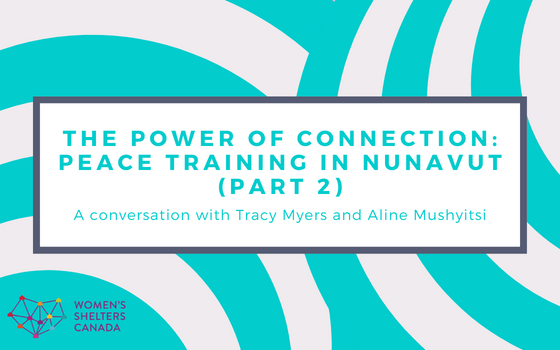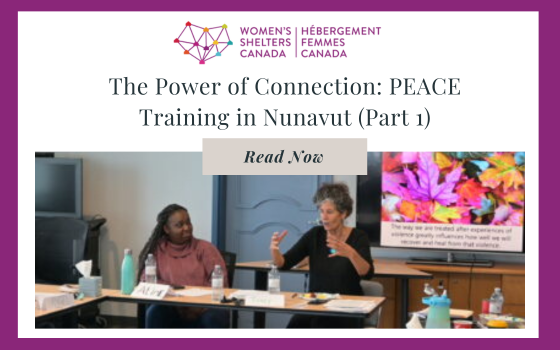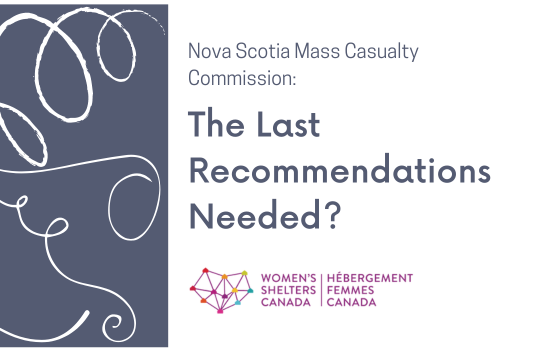This week was scheduled to be the last week for witness statements on the study of VAW shelters and transition houses. Witnesses are listed at the end of this post. However, due to scheduling issues and a shorter eighth meeting, a final meeting is scheduled for later in November.
Women’s Shelters Canada is deeply concerned by the lack of representation of the witnesses who have appeared so far. In eight meetings, there have been 49 people present giving 40 witness statements (some organizations had more than one person delivering the witness statement). Of these, only a handful have not been cis white men and women.
 So far, NO Indigenous women’s organization or shelter has appeared before the committee. Some witnesses have been able to speak to the experience of Indigenous people they serve, but none have been Indigenous women’s organizations themselves. This week, the first non-governmental Indigenous organization appeared before the committee – Aboriginal Housing Society. This organization is not, however, focused on Indigenous women. In his witness statement, the ED of the organization did not focus on the gaps in services for women fleeing violence, but rather on, again, the housing continuum and home ownership.
So far, NO Indigenous women’s organization or shelter has appeared before the committee. Some witnesses have been able to speak to the experience of Indigenous people they serve, but none have been Indigenous women’s organizations themselves. This week, the first non-governmental Indigenous organization appeared before the committee – Aboriginal Housing Society. This organization is not, however, focused on Indigenous women. In his witness statement, the ED of the organization did not focus on the gaps in services for women fleeing violence, but rather on, again, the housing continuum and home ownership.
Considering the statistics, it is unconscionable that the Standing Committee has not heard from any Indigenous women themselves. The following is a selection of stats found in WSC’s By the Numbers document published last year:
- Indigenous women are 2.7 times more likely to be victims of violence than non-Indigenous women.
- Reporting rates of spousal violence against Indigenous women are 3 times higher than those against non-Indigenous women.
- Indigenous women are 6 times more likely to be killed than non-Indigenous women.
- According to the RCMP, there were 1,181 cases of missing or murdered Indigenous women in Canada between 1980- 2012. However, grassroots organizations and the Minister of the Status of Women Canada put the number much higher, closer to 4,000.
- Research from the Native Women’s Association of Canada (NWAC) has found that homicides involving Indigenous women are more likely to go unsolved. Only 53% of murder cases in NWAC’s database have been solved, compared to 84% of all murder cases across the country.
- While many women’s shelters and THs receive inadequate government funding, on-reserve shelters serving Indigenous women, children, and families receive up to 50% less than their provincial counterparts.
- In 2016, the federal department of Indigenous and Northern Affairs reported that it provided funding for only 41 shelters to serve the 634 recognized First Nations communities in Canada.
- There are only 15 shelters and transition houses serving 53 Inuit communities across the North. Many of these shelters are small and only accessible by air or ice roads.
The witness lists are created by the three political parties who sit on the Committee – each party is allowed to invite a certain number based on their representation on the Committee, which is correlated to their representation in the government (e.g. the Liberals can invite the most, the NDP the least). Even if one or two indigenous women’s organizations appear as witnesses in the added final meeting, the statistical representation of witnesses will still not be sufficient.
For those who were invited to the Committee this week, WSC was glad to see that generally the focus was back on the shelters and transition houses on the frontlines serving women and children fleeing violence. Some of the issues that were repeated to the Committee over the last two meetings include:
- The problem with single staffing of shelters across the country and the safety concerns that poses both for the staffperson and the women and children residents.
- A lack of comparable levels of services available to women and children across the country, no matter where they live.
- The lack of core funding and the fact that new calls for funding cannot be used for current projects and programming.
- The fact that the most dangerous time for a woman is when she leaves, yet there are systemic barriers making it harder for her to access benefits once she does leave. For example, women are entitled to a housing supplement through Housing Nova Scotia but it is not transferable. If she is being stalked by her abusive partner and needs to relocate, she will lose her supplement. Another example is the 90 day wait period for a person to change their status to single with CRA, which delays access to social assistance.
WSC is pleased with the strong statements that have come from the witnesses present this week regarding the life saving work VAW shelters and transition houses do. As Joanne Baker of BCSTH said, “This is specialised, complex work which has its foundations in a grassroots feminist movement inspired and informed by the lived experience of women themselves.” Jennifer Gagnon of South Shore Transition House Association also echoed what many witnesses have said – that creating housing on its own is not a sufficient solution: “I can honestly say that trauma is not fixed by a mortgage. Trauma takes time. Trauma takes care. Trauma takes people who understand. It is not just simply getting and taking on a mortgage..that trauma needs to be treated first.”
The seventh meeting, on Monday, November 5, was broken into two one-hour slots. In the first hour, witness statements were from Cynthia Drebot (Executive Director, North End Women’s Centre), Jennifer Gagnon (Executive Director, South Shore Transition House Association), Donna Smith (Executive Director, Tearmann Society for Abused Women), and Samantha Lacourse (Coordinator, A Safe Place, Victoria Faulkner Women’s Centre). The second hour consisted of statements from Caithlin Scarpelli (Director, Communications and Fund Development, Atira Women’s Resource Society), Geneviève L. Latour (Associate Director, Crossroads for Women Inc.), Fiona Cunningham (Mental Health Counsellor, Iris Kirby House), and Daisy Kler and Jean Fong (Transition House Workers, Vancouver Rape Relief and Women’s Shelter).
The eighth meeting on Wednesday, November 7, was shortened to about 1 hour, 15 minutes with five witness statements: Diane Beaulieu (Executive Director, Halton Women’s Place), Boyd Thomas (Executive Director, Aboriginal Housing Society), Joanne Baker (Executive Director, BC Society of Transition Houses), Ann Decter (Director, Community Initiatives, Canadian Women’s Foundation), and Linda Lafantaisie Renaud (Director, Horizon Women’s Centre).
Meeting 7: Listen to the audio of the full 2 hour meeting here
Meeting 8: Listen to the audio of the full meeting here





Leave A Comment
You must be logged in to post a comment.